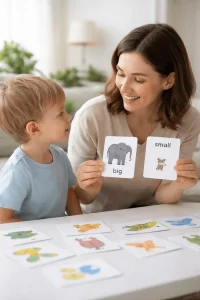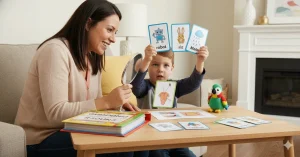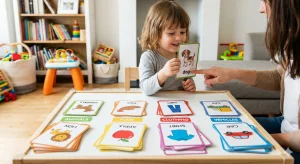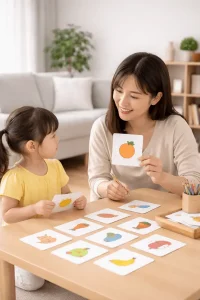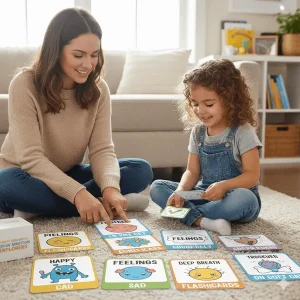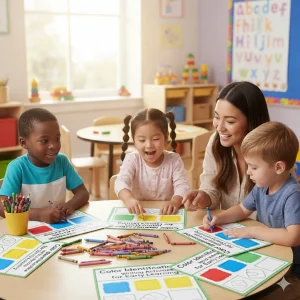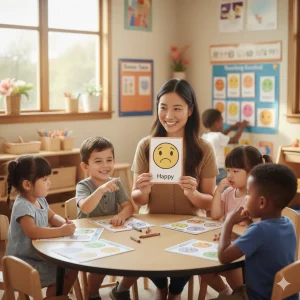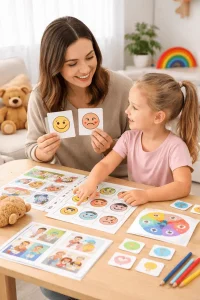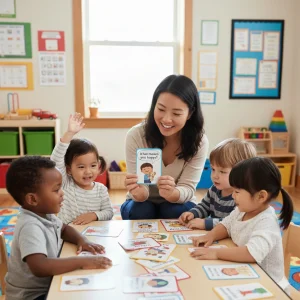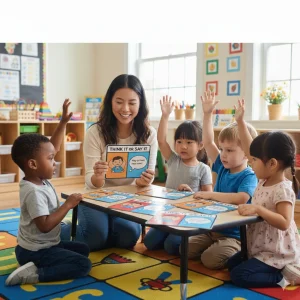Step-by-Step Guide to Creating Social Stories for Autism & ADHD
By Wellness Hub
Last Updated: January 11, 2025
Social stories are essential tools for children with Autism or ADHD, helping them understand social norms and expectations through clear, relatable narratives. At Wellness Hub, we equip families with the necessary resources to craft these stories, enhancing daily understanding and behavior management. This guide provides a straightforward, step-by-step approach to creating effective social stories, supporting you in empowering your child to navigate social interactions more confidently. Let’s get started.
What Are Social Stories?
Creating social stories for autism is a therapeutic tool designed to help children with autism and ADHD better understand and navigate the subtleties of social interactions. These are short descriptions of everyday situations, written in a specific format to clarify the cues, expected behaviors, and perspectives of others involved in those interactions.
The primary purpose of creating social stories for autism is to break down complex social exchanges into manageable, understandable parts. This approach allows children to recognize and respond to social cues appropriately. By presenting information both visually and textually, these stories help address various challenges such as sharing, waiting, taking turns, and understanding emotions—common hurdles for children with communication and behavior differences.
Benefits of Social Stories
Creating social stories for autism can be transformative for children with autism and ADHD, providing them with a unique and effective way to navigate the often-confusing world of social interactions. These simple, structured stories offer several benefits that are key to therapeutic progress and daily comfort.
- Enhance Understanding of Social Norms Children with autism and ADHD may struggle to pick up on social cues and understand the unwritten rules of social behavior. Social stories clarify these norms, illustrating through text and images how to interpret and react in various social situations.
- Improve Behavior Responses By foreseeing and rehearsing scenarios through social stories, children learn appropriate responses and behaviors. This preparation can reduce stress and anxiety, leading to more positive interactions and experiences.
- Increase Confidence As children understand and practice social scenarios, their confidence in handling these situations grows. This self-assurance can carry over into other areas of life, improving overall engagement and participation.
- Support Emotional Regulation Social stories help children with autism and ADHD recognize and label emotions, both their own and others’. Understanding emotions is a crucial step in managing responses to them effectively.
- Facilitate Communication For many children, expressing needs and thoughts verbally can be challenging. Social stories can provide the language tools needed for more effective communication, giving children a voice they might not otherwise have.
Also read: Why Social Stories Work for Children with Autism and ADHD
Preparing to Write Your Social Story
Creating an effective social story for your child involves careful preparation. Here’s a simple, pointwise guide to help you get started:
1. Observe and Understand Your Child’s Needs
- Watch your child in different social situations.
- Identify specific scenarios where they struggle or feel uncomfortable.
2. Assess Your Child’s Interests
- Incorporate their favorite subjects, characters, or activities to make the story engaging.
3. Choose the Right Topic
- Focus on relevant and challenging social skills your child needs to learn, like sharing or turn-taking.
4. Use Autism Support Tools
- Utilize resources from Wellness Hub, such as flashcards and illustrated guides, to simplify the story creation process.
5. Plan with a Storyboard
- Draft a visual outline of the story to organize events and decide on the inclusion of descriptions and dialogues.
Read more about on 6 Tips for Writing Social Stories for Kids with Autism and ADHD
Step-by-Step Guide to Creating Social Stories
Creating social stories for autism can be a rewarding process that helps children with Autism or ADHD improve their understanding of social interactions. Here’s a simple, step-by-step guide to help you craft effective and engaging social stories for your child.
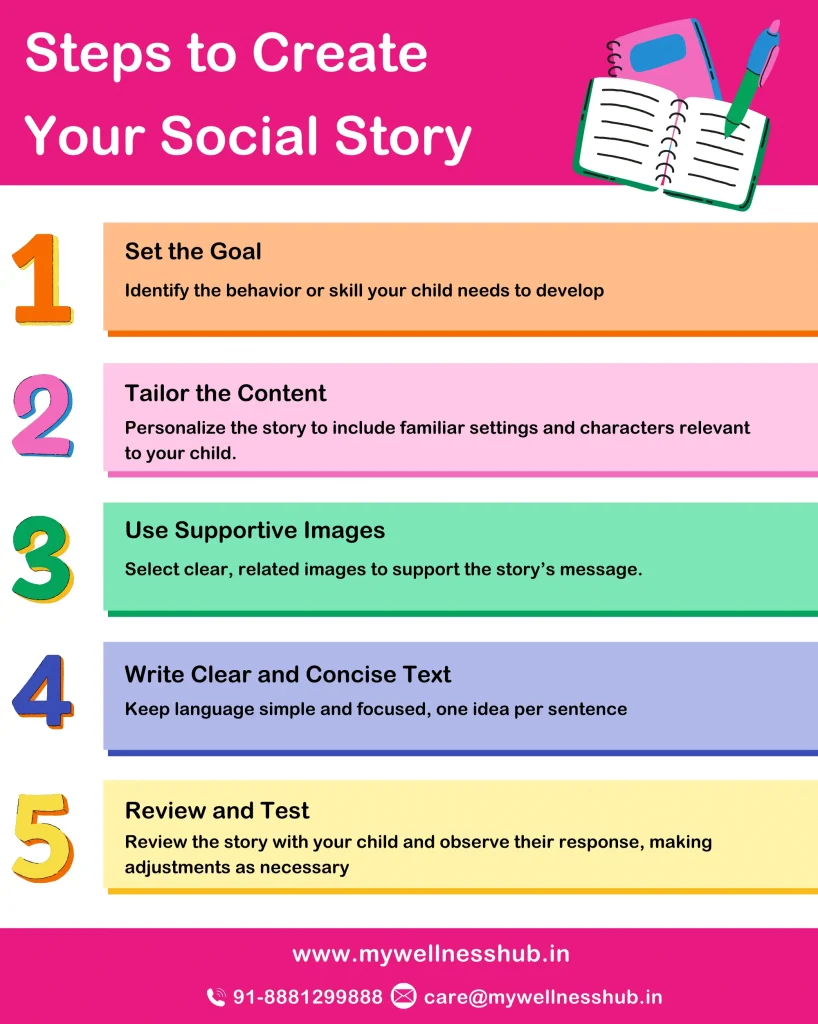
Step 1: Set the Goal
Before you begin, identify the specific behavior or skill you want to address. This could range from learning to wait patiently to understanding how to greet someone. Clear goals help focus the story and ensure it meets your child’s needs. For instance, if your child has ADHD, you might focus on helping them understand how to take turns during conversations.
Step 2: Tailor the Content
Personalize the story to reflect your child’s daily experiences and make it relatable. Use familiar settings, characters, or events to help your child understand and connect with the story. For example, if your child loves a particular cartoon character, using that character in your social story can make the learning process more engaging.
Step 3: Use Supportive Images
Choose images that are clear and directly related to the text to enhance understanding and retention. These images should support the story’s message, helping to clarify social cues and appropriate responses. In stories for children with autism, images play a crucial role in bridging the gap between the story and real-life application.
Step 4: Write Clear and Concise Text
Keep the language simple and direct. Each sentence should be easy to understand and convey only one idea at a time to avoid overwhelming your child. This clarity helps children with ADHD focus on the story without getting distracted by complex language or multiple themes.
Step 5: Review and Test
After writing your social story, review it with someone who knows your child well, and then test it with your child. Observe their reactions and ask for feedback to see if the story is effective or if it needs adjustments. This step is crucial for ensuring that the social story truly meets the intended purpose.
Steps to Create a Social Story
| Step | Description | Tip |
|---|---|---|
| 1. Set the Goal | Define the behavior or skill to address. | Focus on one skill at a time. |
| 2. Tailor the Content | Personalize the story to your child’s experiences. | Use familiar settings or characters. |
| 3. Use Supportive Images | Select images that enhance understanding. | Use clear and simple visuals. |
| 4. Write Clear and Concise Text | Keep language simple and direct. | One idea per sentence. |
| 5. Review and Test | Test the story with your child and observe their response. | Make adjustments based on feedback. |
Implementing Social Stories in Daily Routines
Once your social story is ready, the next step in creating social stories for autism is to integrate it effectively into your child’s daily routine. Use the stories regularly, particularly before challenging situations, to prepare your child. You can also use the stories as part of a bedtime routine or before a specific event, like a doctor’s visit or school day, to help your child anticipate what’s to come.
Conclusion
We’ve covered the steps to create helpful social stories for children with Autism or ADHD. Regular use of these stories can make a big difference in understanding social cues and improving communication. At Wellness Hub, we’re committed to providing the tools and support you need to make these stories a success. Keep using social stories daily and see your child progress. Together, we can help your child thrive—one story at a time. Thank you for choosing Wellness Hub—where every story counts!
Frequently Asked Questions:
1. What is a social story?
A social story is a tailored educational tool that helps children with Autism or ADHD grasp social norms and behavioral expectations. It uses simple text and illustrations to explain social situations, helping children understand and respond to various social interactions appropriately.
2. How do I start creating a social story?
Begin by observing your child to identify the specific behaviors or skills they struggle with. Tailor the story to include familiar settings or characters to engage your child. Use supportive visuals and maintain simple, clear language throughout the story to ensure it is easily understood.
3. What topics are good for social stories?
Effective topics for social stories often involve everyday interactions or challenges your child faces, such as sharing toys, understanding emotions, or learning classroom etiquette. Choose topics that are directly relevant to your child’s daily experiences and immediate needs.
4. Can social stories help with school readiness?
Yes, social stories are excellent for preparing children for school by explicitly explaining the behaviors expected in a classroom, such as how to ask for help, the importance of quiet time, and following instructions. They help children visualize and practice these behaviors beforehand, reducing anxiety.
5. How often should I use social stories with my child?
For the best results, integrate social stories into your child’s daily routine, particularly before encountering situations they find challenging. Regular repetition helps reinforce the behaviors and skills taught in the stories, making them more familiar and manageable for your child.
6. What type of images should I use in a social story?
Choose images that clearly illustrate the action or emotion discussed in the story. The images should be relatable to your child, potentially mirroring their environment and the people they interact with, to enhance comprehension and relatability.
7. Can social stories reduce anxiety in children with ADHD?
Absolutely. Social stories provide a predictable sequence of events that prepare children for what’s to come, helping to alleviate anxiety about unknown or stressful situations. They offer a visual and verbal roadmap of behaviors to emulate, which can be particularly reassuring.
8. Where can I find examples of social stories?
For examples and templates of social stories, check out the resources available on WellnessHub. Our site offers a variety of stories that you can customize according to your child’s needs and preferences, providing a great starting point for parents new to this approach.
9. How do I know if the social story is effective?
Monitor your child’s reactions and behaviors during and after reading the social story. Look for improvements in understanding and handling the situations covered. Feedback from teachers or caregivers can also provide insight into the story’s effectiveness. Adjust the content as needed based on these observations.
10. Can social stories improve behavior at home?
Definitely. By clearly outlining expectations and walking through scenarios at home, such as family meal times or preparing for bed, social stories can help children learn and adapt to routines and behaviors that make home life more harmonious for everyone.
About the Author:
Shravanaveena Gajula
M.Sc ., Speech and Language Pathology (5+ years of experience)
Shravanaveena Gajula is a dedicated Audiologist and Speech-Language Pathologist with a BASLP and an M.Sc in Speech and Language Pathology. With experience spanning multiple settings, including Wellness Hub and Ashray Akruti, Veena specializes in a wide range of disorders from developmental issues in children to speech and language assessments in adults. Her expertise includes parent counseling, managing speech sound and fluency disorders, and creating individualized therapy programs. Veena is also PROMPT certified and an author of several insightful blogs on speech and language pathology, aiming to educate and assist caregivers in supporting their loved ones.
Book your Free Consultation Today
Parent/Caregiver Info:
Client’s Details:
* Error Message
